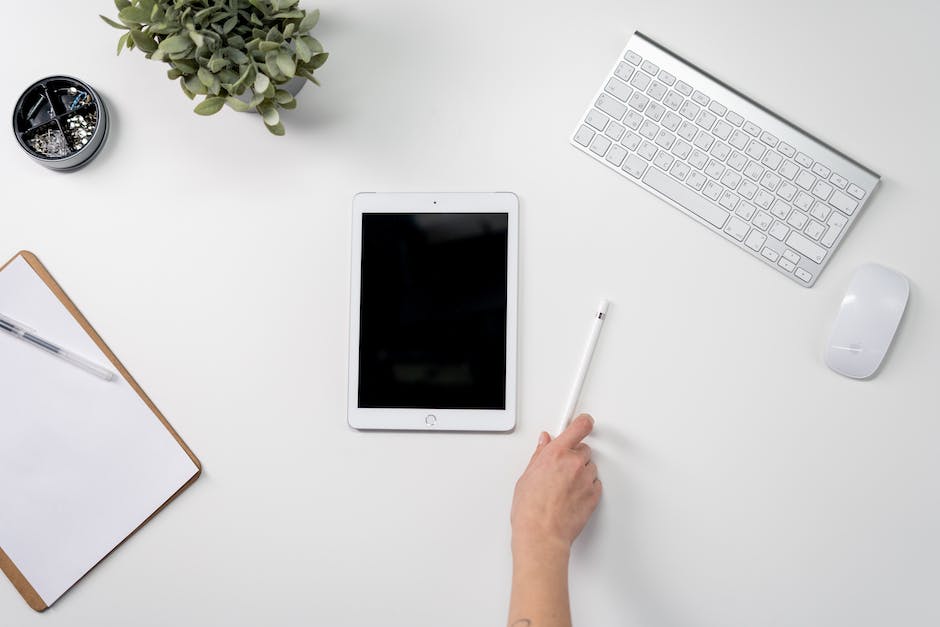Today, a laptop is one of the essential tools a graphic designer needs, not just any laptop, but one that can smoothly run design software while delivering high-quality graphics.
This article offers an in-depth look into the world of laptops for graphic designing, from understanding the basics and hardware needs to making a comparative study of different brands and models. It is aimed at helping enthusiasts and hobbyists become skilled and more informed about their tools of trade.
Graphic design has evolved tremendously over the years, with technology playing a significant role in this transition. As the field continues to grow, so does the need for powerful tools to support the creative process.
Understanding Basics of Graphic Designing and Hardware Needs
Understanding Basics of Graphic Designing and Hardware Needs
Graphic designing encompasses the process of visual communication using typography, photography, and illustration.
This field is multifaceted and requires a laptop equipped with powerful hardware and an equally adept software suite, typically Adobe Creative Cloud, to function optimally.
Essential Hardware Components for a Graphic Design Laptop
The four major hardware components that impact the performance of a graphic design laptop are the processor, graphics card, RAM, and storage.
- Processor: The central processing unit (CPU) acts as the brain of your system. It controls the other components of your laptop and determines the speed at which operations are carried out. For graphic designing, a high-speed, multi-core processor, like an Intel i7 or higher, is preferred to ensure smooth and faster rendering of graphics.
- Graphics Card: Also known as the video card, the graphics card is a piece of hardware that generates the images you see on your laptop screen. For graphic design work, a dedicated graphics card with a high video RAM (VRAM) is crucial, as it enables the rendering of high-resolution images and videos without lag.
- RAM: Random Access Memory (RAM) is the laptop’s short-term memory. It temporarily stores data that is currently being worked on. A high-capacity RAM, 16GB or more, allows for efficient multitasking and smooth operation of demanding programs, like Adobe Illustrator or Photoshop.
- Storage: An adequate amount of storage is necessary to save large design files. Solid-state drives (SSDs) are recommended over traditional hard drives (HDDs) because they are faster and more reliable.
Impact of Adobe Creative Cloud on Laptop Performance
Adobe Creative Cloud is a suite of applications and services that provides designers with a range of tools for graphic design.
However, these applications, including Adobe Photoshop, Illustrator, and InDesign, among others, demand significant processing power and memory.
- These software engage multiple cores of the CPU, use the GPU for rendering operations, and often require considerable RAM and storage space to function optimally.
- Therefore, a laptop for graphic designing needs to have a robust hardware configuration to support the extensive use of Adobe Creative Cloud.
Additionally, Adobe Creative Cloud applications frequently receive updates, which can put added strain on the laptop’s resources. This makes it critical to have a laptop with high-end hardware that can comfortably accommodate updates and enhance the performance and usability of the graphic design software.
Diving into the realm of graphic design, it’s critical to understand the direct correlation between a laptop’s hardware specifications and its proficiency in handling graphic design tasks.
The effect of software usage also significantly affects your laptop’s performance, hence comprehending these elements precedes a smooth graphic design experience.

Comparative Study of Various Laptop Brands and Models
Getting Acquainted with Various Laptop Brands for Graphic Designing
Venturing into graphic designing on laptops requires a grasp of the unique features presented by different brands and models, and how they can enhance your design process.
Among the leading brands, Apple stands out with its MacBooks, esteemed for their high-resolution Retina displays known for vibrant and precise color portrayal—a must-have for graphic design.
The efficient performance, impeccable Adobe Suite integration, and handy iCloud services elevate them into a favorite among professionals, despite their premium pricing.
For Windows aficionados, Dell’s XPS range provides an equally powerful substitute. With OLED displays, potent processors, and dedicated graphics cards, they are well-equipped to handle graphic design tasks.
As an illustration, the latest Dell XPS 15 boasts a 15.6-inch 4K UHD touchscreen that is an absolute delight for designers.
Crafted to cater to professional creative minds, HP’s ZBook series sports its DreamColor technology for precise color representation, robust graphics processors, and substantial memory, facilitating effortless transition between complex tasks.
Looking beyond these options, brands like Asus and Razer have also stepped up their game. Asus’s ZenBook Pro Duo comes with a dual-screen setup, encouraging increased productivity and a dedicated workspace.
Razer Blade Studio with its advanced Quadro RTX 5000 graphic engine and high refresh rate screen attracts serious gamers and graphic designers alike.
Key Considerations for the Perfect Laptop for Graphic Design
When it comes to graphic design, the speed of the laptop is vital. High-demand software like Adobe Suite eats up a significant amount of computing power, making the processor an essential component.
Quad-core processors, known for their speed, are especially efficient at managing the intense multitasking often associated with graphic design.
The quality of graphics is another pivotal factor. Since graphic design is a visual medium, the laptop’s graphics card must quickly and clearly render high-quality images.
Graphics cards like Nvidia’s GeForce and AMD’s Radeon Pro series are worthy contenders.
The screen of your laptop plays a key role in offering a satisfactory graphic design experience. Laptops with In-Plane Switching (IPS) displays should be your go-to for the most accurate color representation, although touchscreens may be an added benefit depending on one’s personal preference.
While battery life doesn’t have a direct impact on graphic performance, it certainly does influence the duration of your mobile working sessions.
Laptops such as the MacBook Pro, Asus ROG Zephyrus G14, and Dell XPS 15 are known for their lengthy battery lives.
Lastly, overall performance is significant too. This varies from model to model and also depends on your specific needs. To make an informed choice on the best laptop for your graphic design needs, it’s necessary to assess these vital factors.

Reviewing Top Laptops for Graphic Designing
Mastering the Fundamentals
Selecting a laptop for graphic design comes with specific prerequisites in mind. These encompass a robust processor, a high-resolution display, ample storage capacity, a superior graphics card, and widespread RAM.
These features are vital for software like Adobe Illustrator and Photoshop to function optimally and without hiccups. Moreover, the laptop’s portability and battery life are other factors that demand your attention, especially if you’re frequently working away from your primary workspace.
Apple MacBook Pro
Starting off with Apple’s MacBook Pro, this is a popular choice among graphic designers.
The MacBook Pro offers high-resolution Retina displays, powerful Intel or M1 processors coupled with SSD storage, and 16GB RAM, allowing heavy software to run seamlessly.
The MacBook Pro also has a wide color gamut, color-accurate screen, and excellent GPU performance, ideal for complex graphic design tasks.
However, it comes with a high price tag, which may not be suitable for all budgets.
Dell XPS 15
On the Windows side of things, the Dell XPS 15 is a solid contender.
The XPS 15 features a Stunning 4K UHD resolution, 100% Adobe RGB color gamut, and provides strong performance with up to an Intel® i9 processor and 64GB memory.
It also comes with a dedicated NVIDIA® GeForce® GTX 1650 Ti graphics card that boosts your laptop when working on graphic-intensive tasks. However, its small battery capacity may be its only downfall.
ASUS ProArt StudioBook Pro 17
The ASUS ProArt StudioBook Pro 17 is another excellent choice for professional graphic designers.
This laptop is equipped with a 17-inch panel that delivers excellent color accuracy, an important factor for graphic design.
Adding to that, the W700G3T provides the exceptional performance of NVIDIA Quadro RTX 3000 Max-Q, Intel Xeon or Core i7, and up to 64GB RAM.
It’s worth noting though, that this unit is slightly heavier than other laptops, which could impact portability.
HP ZBook Studio x360
The HP ZBook Studio x360 is a versatile option with its 360-degree hinge allowing it to function as both a laptop and a tablet.
The DreamColor display provides accurate and vibrant colors, while the NVIDIA Quadro P1000 graphics card handles design software efficiently.
The machine also boasts an Intel Core i9 or Xeon processor, up to 64GB RAM, and up to 4TB SSD storage space. However, it’s quite bulky and moderately expensive.
Final Thoughts
To wrap things up, the optimal laptop for graphic design is one that best suits your particular needs and preferences.
Each model carries its pros and cons, with the best choice for you hinging on what attributes you value most: be it screen quality, processor speed, storage space, portability, or cost-effectiveness.
Be sure to thoroughly consider these factors when deciding on your purchase.

Understanding Compatibility with Various Graphic Design Software
Effectiveness with Relevant Graphic Design Software
Mastering graphic design hinges heavily on using the right software.
Some of the most popular and lauded in the design industry include programs like Photoshop, Illustrator, and InDesign, among a host of others.
But beware, these applications may not function seamlessly on every laptop. Each piece of software carries its own specific system requirements that your laptop should fulfill for an efficient and hassle-free design experience.
Let’s take Photoshop as an example, a staple in the graphic design industry.
Adobe, the company that produces Photoshop, suggests using a laptop with a multicore Intel or AMD processor that supports 64-bit, and a system that runs Windows 10 or later, or macOS versions 10.14 through 10.15.
RAM-wise, a minimum of 8GB or more is recommended, alongside a graphics card compatible with OpenGL 2.0 or later.
If you’re planning on using Illustrator, the system requirements vary slightly. In this case, your laptop would need a multicore Intel processor with 64-bit support or an M1 Apple Silicon processor.
The system should run on Windows 10 (64-bit) or macOS version 11.0 or later and have at least 8GB of RAM though 16GB or more is preferable for optimal performance.
Lastly, for software like InDesign, the requirements mirror those of Illustrator when it comes to the processor and RAM, but InDesign does need a more powerful, 32-bit video card for the best performance.
Installation and Efficient Running
Installing graphic design software like Photoshop, Illustrator or InDesign is a straightforward process.
You first need to purchase or subscribe to the software from the Adobe website. Then, download and run the installation file on your laptop. Follow the on-screen instructions to complete the installation.
However, simply installing the software doesn’t guarantee efficient running. It’s important to regularly update your software to the latest version to access new features and bug fixes.
If the software runs slowly, try closing other applications that might be using up your device’s resources.
In a bid to get the most out of this software, customizing the workspace according to your preferences also ensures smooth operation.
This includes adjusting the color theme, setting up the toolbox, arranging panels, and saving the workspace for future use.
Each Unique Graphic Design Software Has Specific Requirements
You always need to bear in mind that every graphic design software has distinctive system prerequisites.
Assure that your laptop is compatible with these requirements of the software that you wish to run. If feasible, amplifying your device’s components, such as the CPU, RAM, and GPU, can ensure improved compatibility and help the design software run more smoothly on your laptop.

Maintaining Your Laptop for Graphic Designing
Maintaining your Laptop Clean Is Essential
Beyond software, the physical tidiness of your laptop also plays a crucial role in its performance. Over time, dust accumulation can block the air vents, thereby negatively impacting the laptop’s internal cooling system and overall performance.
Make a routine of regularly cleaning the laptop screen and using a can of compressed air to clear the dust from the keyboard and ports. Remember to avoid shaking or tilting the can while spraying as this could result in the propellant being released onto the laptop and causing potential damage.
Proper Handling of the Laptop
The durability and longevity of your laptop also rely heavily on how you handle and store it. Always transport your laptop in a protective case, avoiding extreme temperatures.
During use, place it on a flat and stable surface to ensure proper ventilation. Avoid eating or drinking near your laptop to prevent accidental spills that could potentially damage your system.
Software Updates and Antivirus Protection
Frequently updating your software and applications contributes greatly to the optimization of your laptop.
This not only gives you access to new features but also fixes any bugs and enhances the security of your system, guarding it against the latest threats.
Also, install reputable antivirus software as an additional shield against malware, keeping the software updated for the best protection.
Uninstall Unnecessary Applications
Removing unused and unnecessary applications helps to declutter your system, freeing up space and making the laptop run smoother.
Besides, keeping unnecessary applications means that your system works harder, which in turn reduces the performance and lifespan of the laptop.
Effective Usage of Laptop Resources
As a graphic designer, you’re likely to run heavyweight software and applications.
To ensure smooth running, try to run only those applications that you are actively using, closing any inactive ones.
Continual memory and processor hogging can wear out your laptop’s components faster and eventually degrade your laptop’s performance.
Routine System Checks
Regularly perform system checks such as disk cleanups, defragmenting your hard disk if necessary, and scan for any system errors.
If you notice that your laptop’s speed has slowed down significantly, it might be due to the hard drive becoming too full or due to the presence of malware in your system.
Hence, it’s important to run these routine checks for troubleshooting and optimal maintenance.
And finally, Back Up Your Data
In the event of a system crash, having a backup of all your data can turn a potential catastrophe into a slight inconvenience.
Set up a cloud account or invest in an efficient external hard drive to regularly back up your files, projects, and important data. It’s always good to have a safety net, particularly when depending on your laptop for your graphic design work.

Diving into the specifics of top-rated laptops suitable for graphic design, their compatibility with different design software, and long-term maintenance practices go a long way in enabling a seamless design journey.
Armed with the knowledge from this material, you’ll not only be capable of choosing the best-suited laptop for your needs but maintain it for optimum performance over an extended period.
Remember, graphic designing is a fusion of creativity and technology, and mastering the tools of the trade is the first step toward creating outstanding designs.

J.S. is the owner, content creator, and editor at Upgrades-and-Options.com. I’ve worked in the IT and Computer Support field for over 20 years. The server hardware in my computer labs has mostly been IBM, but I’ve supported Dell, HP, and various other hardware. In addition, as part of my lab administrator responsibilities, I’ve learned, supported, and repaired/upgraded network hardware such as Cisco routers and switches. READ FULL BIO >>
- Upgrading SSD Storage in the ThinkPad X9-15 Gen 1 Aura Edition
- How Quantum Computing Could Impact Everyday Laptops
- What Is The Difference Between Lenovo’s Pens? (with Part Numbers)
- Legion 5 Laptop Upgrade Guide: Game Like a Pro
- How to Replace Your Laptop Battery: A Step-by-Step Guide
- IdeaPad Gaming 3 Upgrade (Full Specs)
- Shut Down a Lenovo Laptop: Quick and Easy
- Lenovo LOQ 15IRX9 RAM and SSD Upgrade


